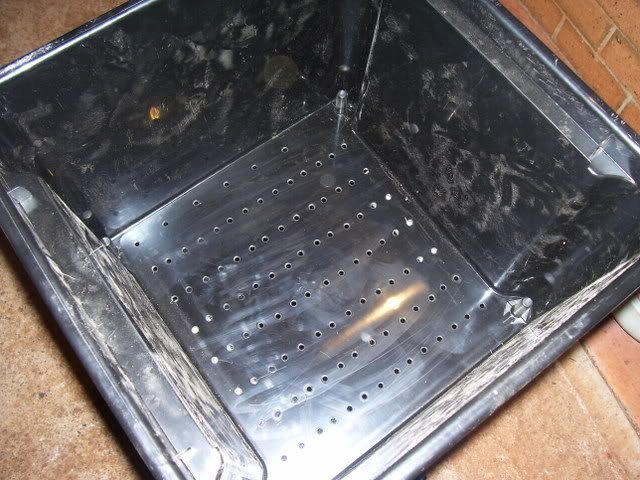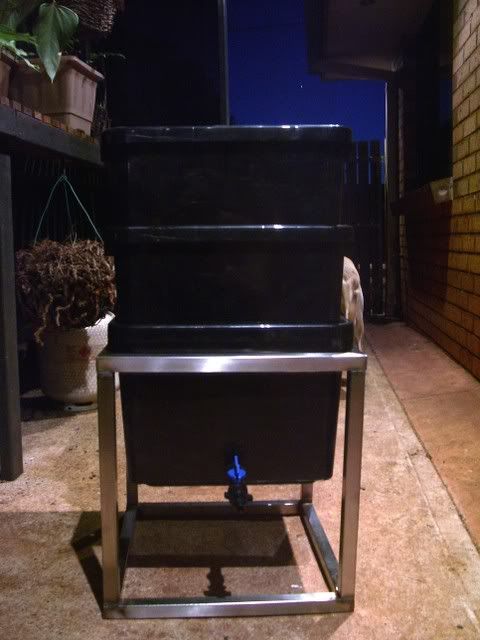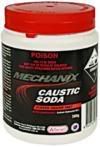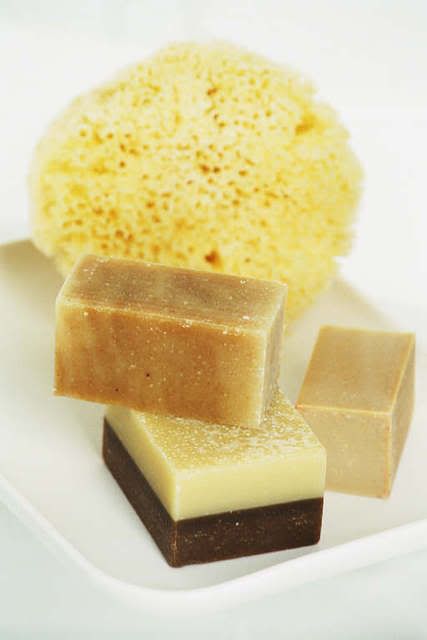We started with 3 black plastic tubs, a plastic tap and some fly screen. DH made a frame out of scrap pieces of stainless RHS so the tubs can sit up off the ground and the liquid can drain into another container. Total cost to us was around $30 plus worms.

Firstly we had to drill holes in 2 of the tubs. This is for drainage of the 'worm wee' and so the worms can move freely between the levels. The base tub is solid and has the tap installed in the bottom. Because these tubs stack on top of each other fairly closely, DH made up some little brackets so they would sit up higher (about 150mm).

In the base tub we put in the tap so we can empty out the liquid that drains down through the farm.

The middle tub has fly screen taped down over the holes so the worms don't fall down into the liquid. The worms will move between the middle and top levels searching for food. This is the middle tub.

The top tub just has the holes in the bottom, so they can move up and down between the top and middle tubs.

With all of that done, we can start adding the bedding for the worms. We used 2 bricks of coco peat which expand to around 9litres when rehydrated and some damp potting mix. The middle tub was filled up to the bracket where the bottom of the top tray sits. This will be the worms main bedding layer. The top tub has a small amount of coco peat and potting mix and about 6 layers of wet newspaper on top. The worm food will be put under the newspaper, which keeps flies and light out, and the moisture in.
So here is the finished product!! The fancy frame that DH made, the solid tub with tap in the bottom, the middle bedding layer filled with coco peat, potting mix and worms, and the top feeding layer with a small amount of coco peat and potting mix, and damp newspaper on top.















